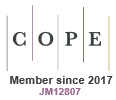A pragmatic workflow towards the generation of pXRF datasets for large-scale soil monitoring programs
Xueyu Zhao A * , Uta Stockmann A , Mark Farrell
A * , Uta Stockmann A , Mark Farrell  B and Senani Karunaratne
B and Senani Karunaratne  A
A
A
B
Abstract
Compared to conventional laboratory methods, portable X-ray fluorescence (pXRF) can rapidly estimate total elemental concentrations of soil samples. Developing an optimised and efficient data collection protocol is crucial for processing large sample numbers. Factors such as sample preparation methods, manufacturer calibration modes, and associated analysis times can influence pXRF performance. We evaluated the performance of different containers and detection modes (Soil vs Geochem) to determine the most time-efficient scanning protocol under standard instrument operation while maintaining acceptable accuracy for large-scale total elemental concentration analysis. Using 130 representative soil samples from the CSIRO National Soil Archive, results showed strong correlations for most elements (K, Ca, Ti, Fe, Cu, and Zr) across different containers. However, Mg, which has a low atomic number element, showed poor correlations (R2 = 0.05), likely due to the limits of detection (LOD) of the Geochem mode. Al and Si exhibited better R2 values but showed a low Lin’s Concordance Correlation Coefficient (LCCC) value of less than 0.1. Among different modes, elements including K, Ca, Ti, Fe, Cu and Zr maintained strong correlations (R2 > 0.65 and LCCC > 0.7). Scanning soil samples through plastic bags in Geochem mode is recommended due to its shorter measurement and sample preparation time and ability to detect lighter elements (Mg, Al, and Si). This optimised protocol will support national scale soil monitoring programs with large sample sizes (e.g. n > 3000 soil samples). For future work, elemental data acquired can support for example investigations of how soil mineralogy influences carbon storage capacity and provide insights to the biological-chemical stabilisation of soil organic carbon.
Keywords: containers, detection modes, large-scale soil data collection, portable X-ray fluorescence, proximal sensing, soil monitoring, time-efficient scanning protocol, total elemental concentrations.
References
Andrade R, Silva SHG, Weindorf DC, Chakraborty S, Faria WM, Mesquita LF, Guilherme LRG, Curi N (2020) Assessing models for prediction of some soil chemical properties from portable X-ray fluorescence (pXRF) spectrometry data in Brazilian Coastal Plains. Geoderma 357, 113957.
| Crossref | Google Scholar |
Baldock J, Macdonald L, Sanderman J (2013) Foreword to ‘soil carbon in Australia’s agricultural lands’. Soil Research 51(8), 1-2.
| Crossref | Google Scholar |
Bócoli FA, Ribeiro D, Mancini M, De Sousa LA, Barbosa SM, Serafim ME, Silva BM, Avanzi JC, Guilherme LRG, Curi N, Silva SHG (2025) Can environmental variables, high sampling density and machine learning deliver detailed maps of soil organic carbon and carbon stock in tropical regions? CATENA 249, 108718.
| Crossref | Google Scholar |
Fedeli R, Di Lella LA, Loppi S (2024) Suitability of XRF for routine analysis of multi-elemental composition: a multi-standard verification. Methods and Protocols 7(4), 53.
| Crossref | Google Scholar | PubMed |
Georgiou K, Jackson RB, Vindušková O, Abramoff RZ, Ahlström A, Feng W, Harden JW, Pellegrini AFA, Polley HW, Soong JL, Riley WJ, Torn MS (2022) Global stocks and capacity of mineral-associated soil organic carbon. Nature Communications 13(1), 3797.
| Crossref | Google Scholar | PubMed |
McNally SR, Beare MH, Curtin D, Meenken ED, Kelliher FM, Calvelo Pereira R, Shen Q, Baldock J (2017) Soil carbon sequestration potential of permanent pasture and continuous cropping soils in New Zealand. Global Change Biology 23(11), 4544-4555.
| Crossref | Google Scholar | PubMed |
Naimi S, Ayoubi S, Di Raimo LADL, Dematte JAM (2022) Quantification of some intrinsic soil properties using proximal sensing in arid lands: application of Vis-NIR, MIR, and pXRF spectroscopy. Geoderma Regional 28, e00484.
| Crossref | Google Scholar |
O’Rourke SM, Stockmann U, Holden NM, McBratney AB, Minasny B (2016) An assessment of model averaging to improve predictive power of portable vis-NIR and XRF for the determination of agronomic soil properties. Geoderma 279, 31-44.
| Crossref | Google Scholar |
Orgiazzi A, Ballabio C, Panagos P, Jones A, Fernández-Ugalde O (2018) LUCAS soil, the largest expandable soil dataset for Europe: a review. European Journal of Soil Science 69(1), 140-153.
| Crossref | Google Scholar |
Ravansari R, Wilson SC, Tighe M (2020) Portable X-ray fluorescence for environmental assessment of soils: not just a point and shoot method. Environment International 134, 105250.
| Crossref | Google Scholar | PubMed |
Ross P-S, Beaudette M, Daoudene Y (2024) Portable XRF applied to regional bedrock mapping in Quebec, Canada. Journal of Geochemical Exploration 258, 107397.
| Crossref | Google Scholar |
Solleiro-Rebolledo E, Rivera-Uria Y, Chávez-Vergara B, Díaz-Ortega J, Sedov S, Alcalá-Martínez JR, Beltrán-Paz OI, Jardines-Martínez LG (2019) Evolution of the landscape and pedodiversity on volcanic deposits in the south of the Basin of Mexico and its relationship with agricultural activities. Terra Latinoamericana 37(4), 501-518.
| Crossref | Google Scholar |
Stockmann U, Cattle SR, Minasny B, McBratney AB (2016) Utilizing portable X-ray fluorescence spectrometry for in-field investigation of pedogenesis. CATENA 139, 220-231.
| Crossref | Google Scholar |
Tavares TR, Molin JP, Alves EEN, Melquiades FL, De Carvalho HWP, Mouazen AM (2023) Towards rapid analysis with XRF sensor for assessing soil fertility attributes: effects of dwell time reduction. Soil and Tillage Research 232, 105768.
| Crossref | Google Scholar |
Towett EK, Shepherd KD, Lee Drake B (2016) Plant elemental composition and portable X-ray fluorescence (pXRF) spectroscopy: quantification under different analytical parameters. X-Ray Spectrometry 45(2), 117-124.
| Google Scholar |
Weindorf DC, Paulette L, Man T (2013) In-situ assessment of metal contamination via portable X-ray fluorescence spectroscopy: Zlatna, Romania. Environmental pollution 182, 92-100.
| Crossref | Google Scholar | PubMed |
Zhang Y, Hartemink AE (2019) Soil horizon delineation using vis-NIR and pXRF data. CATENA 180, 298-308.
| Crossref | Google Scholar |


